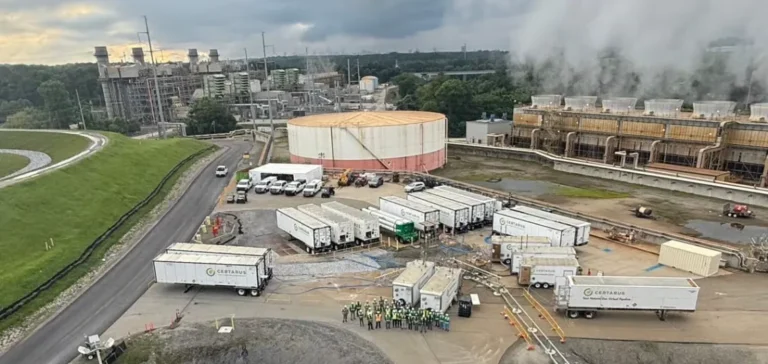Georgia Power and Mitsubishi Power have successfully conducted a major test blending 50% hydrogen with natural gas on an advanced class M501GAC gas turbine. This test, conducted at both full and partial loads, represents the first industrial-scale achievement of such a high proportion of hydrogen in advanced equipment.
Reduction in CO2 Emissions
According to the released results, the hydrogen blend enabled a reduction of approximately 22% in carbon dioxide (CO2) emissions compared to operation using natural gas alone. This series of tests, carried out over several weeks during May and June, involved varying hydrogen blend rates ranging from 5% to 50%. It follows an initial successful trial in 2022, during which a 20% hydrogen blend was tested at the same location.
The project took place at the McDonough-Atkinson power station, located near Atlanta and operated by Georgia Power. Mitsubishi Power provided full expertise, including technical management, specialized equipment supply, and fuel logistics oversight. The company Certarus was also involved, managing hydrogen sourcing and transportation for these trials.
Prior Technical Modernisation
To facilitate this operation, the turbine had been modified the previous year, transitioning from steam cooling to air cooling. This technical upgrade was necessary to enhance start-up performance and operational flexibility, while also reducing maintenance costs.
The McDonough-Atkinson site operates several M501G and M501GAC turbines capable of producing a combined maximum power of 1,700 megawatts (MW), sufficient to supply approximately 1.7 million homes. The plant has primarily used natural gas since its complete conversion in 2012.
Long-term Energy Strategy
Natural gas currently accounts for around 40% of Georgia Power’s annual energy production. The company is advancing several projects approved by the Georgia Public Service Commission (PSC) to ensure stable and competitive energy supply in response to growing regional demand. Among these initiatives are three new Mitsubishi Power simple-cycle combustion turbines installed at Plant Yates, in Coweta County.
Additionally, Georgia Power has announced planned upgrades for ten existing gas turbines at Plant McIntosh under its 2025 Integrated Resource Plan (IRP). This project is expected to add an additional 268 MW to existing capacity to meet future energy needs.
Rick Anderson, senior vice-president and production manager at Georgia Power, highlights the strategic importance of these tests: “Natural gas plays a crucial role in our energy mix by providing flexibility and quick response to demand. Current investments aim to ensure reliable long-term energy supply while reducing our overall emissions.”






















